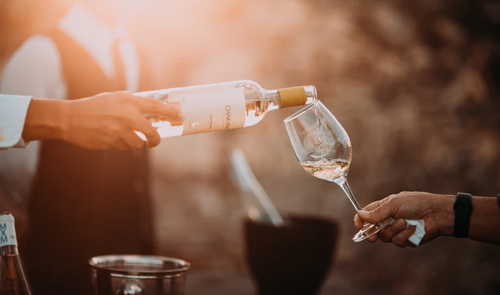Luxury Item
- 9th Dec 2020
- 2303
- 0

What Is a Luxury Item?
Luxury is something that brings liveliness to day to day life. There is a feel of class and prosperity when it comes to luxurious life or any luxurious item. A luxury item is not something that's necessary to live, it's not one of the basic needs, but it is deemed highly desirable within a culture or a society. Demand for luxury goods is high when a person is wealthy or income is more. Typically, the more the income, the more rich is lifestyle and luxurious items are included mainly in rich life. Wealthier the person, the luxurious is life of a person.
In economics, a luxury good is considered as a good for which demand increases more than proportionally as income rises, the expenditures spent on the good become a greater proportion of overall spending.
The word "luxury" basically originated from the Latin word luxuria, which has meaning as exuberance, excess, abundance.
Since luxury goods are expensive, wealthy people are disproportionate consumers for luxury goods. Those who are not wealthy generally don't buy luxury goods since they are usually of high cost and their income goes to need-based expenses in order to live a simple life. Luxury goods can be considered as conspicuous consumption, which includes mainly the purchase of goods or solely to show off one's wealth.
Key Takeaways
To live a simple life, there is no need for a luxury item. It is something that is deemed highly desirable within a culture or society.
Luxury items tend to be sensitive and affect the income or wealth of a person. This simply means that as wealth rises, so do the purchases of luxury items.
Luxury items include high-end automobiles as well as services which include full-time or live-in chefs and housekeepers.

Understanding Luxury Items
Luxury items are not always for show off. Sometimes, it just reflects the class and elegance of a place. Luxury items are used to represent the positive income elasticity of demand, which is basically the measure of how responsive the demand is for a good to a change in the income of a person. Conversely, if the income declines, it will result in a decline in demand for luxury items as well.

For example, demand for large, high-definition (HD) televisions (TVs) would likely increase as income rises. It's obvious that if someone has money then he/she will try to bring the best for her/himself and for the family. Since people have the extra income to splurge on a big TV, they surely will bring this item to use. However, if a recession occurs, which will result in negative economic growth, causing people to lose their job or experience less income than usual from a lower-paying job, the demand for HD TVs would likely decline in the end. In conclusion, HD TVs here would be considered a luxury item.
Luxury items are not that should be compulsorily used, they are opposite of necessity goods or need expenses, necessity goods are the goods that people buy regardless of their income level. Food, water, and utilities used to live in a house or an apartment, these things are necessity goods for common people.
Luxury items can include various services, such as full-time or live-in chefs and the housekeepers. Luxurious things can also include the financial services which are considered as luxury services by default because persons in lower-income brackets typically do not use them. Luxury goods do have a special luxury packaging in order to be represented differently from the products which belong to mainstream products of the same category. Of course, the definition of a luxury item is special and is somewhat subjective, depending on the financial circumstances of a person. For example, one might consider a car a luxury item and on the other hand another might consider it as a necessity.
Luxury Item Vs. Inferior Good
An inferior good is a good which experiences less demand as the income of a person increases. As a result, it has a negative elasticity of demand. For example, low price, cheap, store-brand coffee would likely experience an increase in its demand when income of people is low. However, as the income increases, the demand for store-brand coffee would automatically decline and people will demand for the more expensive, higher-quality coffee. As a conclusion, the store brand coffee can be considered as an inferior good.

Luxury items are not inferior goods, as they have their own identity because most of the luxurious brands belong to a brand name; instead, they're the goods that people opt to buy when the income increases. These items tend to replace inferior goods.

A luxury good may become an inferior good in some cases when there are different income levels. Let's consider an example, if a wealthy person gets wealthy enough, and income increases more than usual then they may stop buying and increasing numbers of luxury cars in order to start collecting buying airplanes or yachts–because, the higher income levels, the higher is the demand of the luxurious item. So, in this case, the luxury car would become an inferior good.
Special Considerations
Some of the luxury products purport to be an excellent example of Veblen goods; these are the goods which see their demand rise because they are considered as status symbols. In simple words, as the price of the good increases, so does the demand, as more people perceive it, it has a higher value. In conclusion, Veblen goods have a positive price elasticity of demand that is the measures of the change in demand as a result of a change in price. Let's consider an example; raising the price on a bottle of a brand can surely increase its perceived value that can cause increase in sales, rather than decrease.
Certain luxury items are the once which are highly demanded and these may be subjected to a specific tax or luxury tax. Large or expensive recreational boats or automobiles include such luxury items that can be subject to a federal tax. For example, the U.S. levied a luxury tax on certain automobiles in the 1990s but ended the tax in 2003. Luxury taxes are variable and can be considered as progressive because they typically affect the people with high net wealth or high income.
Examples of Luxury Items
Although luxury items are different for different people and they differ from one person to another, following items are considered as luxurious items.
Haute couture clothing

Accessories, such as jewelry and high-end watches

Luggage

A high-end automobile, such as a sports car

A yacht

Wine

Homes and estates

 Dipali Wath
Dipali Wath


Comments
No comments yet.
Add Your Comment
Thank you, for commenting !!
Your comment is under moderation...
Keep reading luxury post